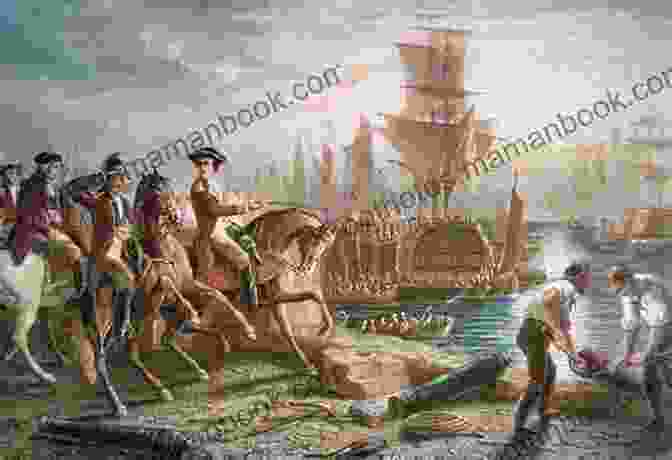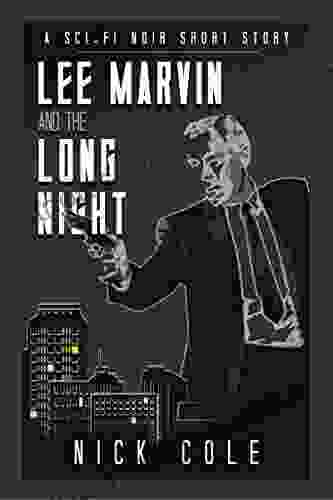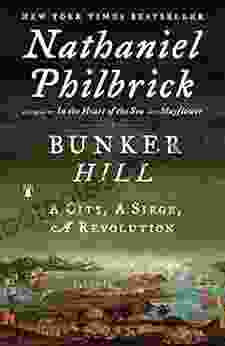City Siege Revolution: The American Revolution's Pivotal Battles for Urban Centers


The American Revolution was not only fought in the open countryside but also in the heart of cities. As the conflict intensified, British forces sought to gain control of major urban centers to quell rebellion and secure strategic positions. The resulting sieges became pivotal moments in the war, testing the limits of both the British and American armies and shaping the course of the Revolution.
4.6 out of 5
| Language | : | English |
| File size | : | 42338 KB |
| Text-to-Speech | : | Enabled |
| Screen Reader | : | Supported |
| Enhanced typesetting | : | Enabled |
| X-Ray | : | Enabled |
| Word Wise | : | Enabled |
| Print length | : | 418 pages |
The Siege of Boston
The Siege of Boston (1775-1776) marked the opening act of the American Revolution. British troops under General Thomas Gage occupied the city in response to growing tensions with the colonists. However, the Continental Army, led by George Washington, quickly surrounded Boston, cutting off British supply lines and forcing them into a defensive position.
The siege lasted for nearly a year, during which both sides endured harsh conditions and numerous skirmishes. In March 1776, the British were forced to evacuate Boston after Washington placed cannons on Dorchester Heights, threatening their position. The siege was a major victory for the Americans, signaling the end of British control over Massachusetts and bolstering morale among the patriot forces.
The Siege of Ticonderoga
Located on the shores of Lake Champlain, Fort Ticonderoga was a strategic stronghold for controlling access to the Hudson River. The British sought to capture the fort in 1777 to secure their supply lines and threaten the American forces in the Hudson Valley.
The Americans, led by General Horatio Gates, successfully defended Ticonderoga during the first siege in May 1777. However, British forces under General John Burgoyne returned in July 1777 and overwhelmed the American garrison, forcing them to retreat.
The fall of Ticonderoga was a significant setback for the Americans, opening the way for Burgoyne's invasion of New York. However, the British victory proved costly, as they suffered heavy losses and alienated the local population by burning nearby communities.
The Siege of Trenton
After their defeat at Germantown in October 1777, the Continental Army was on the brink of collapse. In a bold move, Washington decided to launch a surprise attack on the British garrison at Trenton, New Jersey, on Christmas night.
Crossing the ice-choked Delaware River, the American forces overwhelmed the Hessian mercenaries defending Trenton, capturing over 900 prisoners and boosting the morale of the Continental Army. The victory at Trenton was a turning point in the war, demonstrating the resilience and fighting spirit of the American forces.
The Siege of Charleston
Charleston, South Carolina, was the largest city in the South and a vital British stronghold. In April 1780, the British army and navy launched a joint siege of the city, intending to capture it and cripple the American cause in the South.
The American garrison, led by General Benjamin Lincoln, defended the city fiercely for over a month. However, British forces, under General Henry Clinton, eventually overpowered the Americans, forcing them to surrender on May 12, 1780.
The fall of Charleston was a major blow to the American war effort. It marked the loss of a critical port and a strategic gateway to the interior of the South. The British held Charleston for over two years, using it as a base for raids throughout the region.
The Siege of Yorktown
The Siege of Yorktown (September-October 1781) was the final major battle of the American Revolution. British General Charles Cornwallis, after leading a devastating campaign through the South, had entrenched his army in Yorktown, Virginia.
Washington saw an opportunity to trap Cornwallis and end the war. He allied with French General Jean-Baptiste Donatien de Vimeur, comte de Rochambeau, and together they laid siege to Yorktown. The combined American and French forces outnumbered the British by nearly two to one.
After a month-long siege, during which French cannons bombarded the British defenses, Cornwallis was forced to surrender on October 19, 1781. The surrender at Yorktown was a decisive victory for the Americans and effectively ended the war.
Legacy of the City Sieges
The sieges during the American Revolution played a pivotal role in the conflict. They tested the limits of both the British and American armies, demonstrated the importance of urban centers in warfare, and contributed to the eventual outcome of the Revolution.
The Siege of Boston marked the beginning of the armed conflict and demonstrated the determination of the American colonists to fight for their independence. The Siege of Ticonderoga had a significant impact on the war in the Hudson Valley and highlighted the importance of controlling strategic waterways.
The Siege of Trenton was a morale booster for the American forces and proved that they could withstand British attacks. The Siege of Charleston showed the effectiveness of joint land and naval operations and the brutality of war in urban settings.
Finally, the Siege of Yorktown was the culmination of the Revolution, leading to the surrender of the British army and the recognition of American independence. The sieges during the American Revolution continue to be studied and remembered, providing valuable insights into the complexities of urban warfare and the transformative nature of the conflict.
4.6 out of 5
| Language | : | English |
| File size | : | 42338 KB |
| Text-to-Speech | : | Enabled |
| Screen Reader | : | Supported |
| Enhanced typesetting | : | Enabled |
| X-Ray | : | Enabled |
| Word Wise | : | Enabled |
| Print length | : | 418 pages |
Do you want to contribute by writing guest posts on this blog?
Please contact us and send us a resume of previous articles that you have written.
 Top Book
Top Book Novel
Novel Fiction
Fiction Nonfiction
Nonfiction Literature
Literature Paperback
Paperback Hardcover
Hardcover E-book
E-book Audiobook
Audiobook Bestseller
Bestseller Classic
Classic Mystery
Mystery Thriller
Thriller Romance
Romance Fantasy
Fantasy Science Fiction
Science Fiction Biography
Biography Memoir
Memoir Autobiography
Autobiography Poetry
Poetry Drama
Drama Historical Fiction
Historical Fiction Self-help
Self-help Young Adult
Young Adult Childrens Books
Childrens Books Graphic Novel
Graphic Novel Anthology
Anthology Series
Series Encyclopedia
Encyclopedia Reference
Reference Guidebook
Guidebook Textbook
Textbook Workbook
Workbook Journal
Journal Diary
Diary Manuscript
Manuscript Folio
Folio Pulp Fiction
Pulp Fiction Short Stories
Short Stories Fairy Tales
Fairy Tales Fables
Fables Mythology
Mythology Philosophy
Philosophy Religion
Religion Spirituality
Spirituality Essays
Essays Critique
Critique Commentary
Commentary Glossary
Glossary Bibliography
Bibliography Index
Index Table of Contents
Table of Contents Preface
Preface Introduction
Introduction Foreword
Foreword Afterword
Afterword Appendices
Appendices Annotations
Annotations Footnotes
Footnotes Epilogue
Epilogue Prologue
Prologue Carolyn Ketchum
Carolyn Ketchum Mark Hendricks
Mark Hendricks Stephen Robert Stein
Stephen Robert Stein Dane Huckelbridge
Dane Huckelbridge Laura Mcinerney
Laura Mcinerney James Carroll
James Carroll Brian Pomphrey
Brian Pomphrey Anthony J Evans
Anthony J Evans Chloe Liese
Chloe Liese Mark Tepper
Mark Tepper Renea Winchester
Renea Winchester Timothy Schaffert
Timothy Schaffert Michelle Huneven
Michelle Huneven Clea Shearer
Clea Shearer Cristin O Keefe Aptowicz
Cristin O Keefe Aptowicz Stan Gibilisco
Stan Gibilisco D N Meinster
D N Meinster Sarah Blodgett
Sarah Blodgett Karen Hines
Karen Hines Brad Johnson
Brad Johnson
Light bulbAdvertise smarter! Our strategic ad space ensures maximum exposure. Reserve your spot today!

 Art MitchellThe Many Lives and Secret Sorrows of Josephine: A Narrative Exploration of...
Art MitchellThe Many Lives and Secret Sorrows of Josephine: A Narrative Exploration of...
 Jonathan FranzenShreds of Gorak 11: 20 Short Reads of Gorak - Unraveling the Mysteries of an...
Jonathan FranzenShreds of Gorak 11: 20 Short Reads of Gorak - Unraveling the Mysteries of an... Jerry HayesFollow ·18.2k
Jerry HayesFollow ·18.2k Cody BlairFollow ·15.6k
Cody BlairFollow ·15.6k Rex HayesFollow ·10.7k
Rex HayesFollow ·10.7k Abe MitchellFollow ·19.8k
Abe MitchellFollow ·19.8k Jonathan HayesFollow ·8.2k
Jonathan HayesFollow ·8.2k Dallas TurnerFollow ·4.8k
Dallas TurnerFollow ·4.8k Edgar CoxFollow ·9.4k
Edgar CoxFollow ·9.4k Devin RossFollow ·18.4k
Devin RossFollow ·18.4k

 Colin Foster
Colin FosterBlacktop Wasteland: A Novel S A Cosby
In the vast literary landscape of...

 Curtis Stewart
Curtis StewartOvid's Metamorphoses: An Ancient Epic of Transformation...
Ovid's Metamorphoses is an epic poem...

 Adam Hayes
Adam HayesThe Elements of Piano Playing Op. 30: A Comprehensive...
: Unveiling...

 Patrick Hayes
Patrick HayesLee Marvin and The Long Night: A Tale of Vengeance, Grit,...
In the annals of Western cinema, few...

 Jermaine Powell
Jermaine PowellUnveiling the Alluring World of Romantic Thrillers,...
Prepare to delve into a...
4.6 out of 5
| Language | : | English |
| File size | : | 42338 KB |
| Text-to-Speech | : | Enabled |
| Screen Reader | : | Supported |
| Enhanced typesetting | : | Enabled |
| X-Ray | : | Enabled |
| Word Wise | : | Enabled |
| Print length | : | 418 pages |










